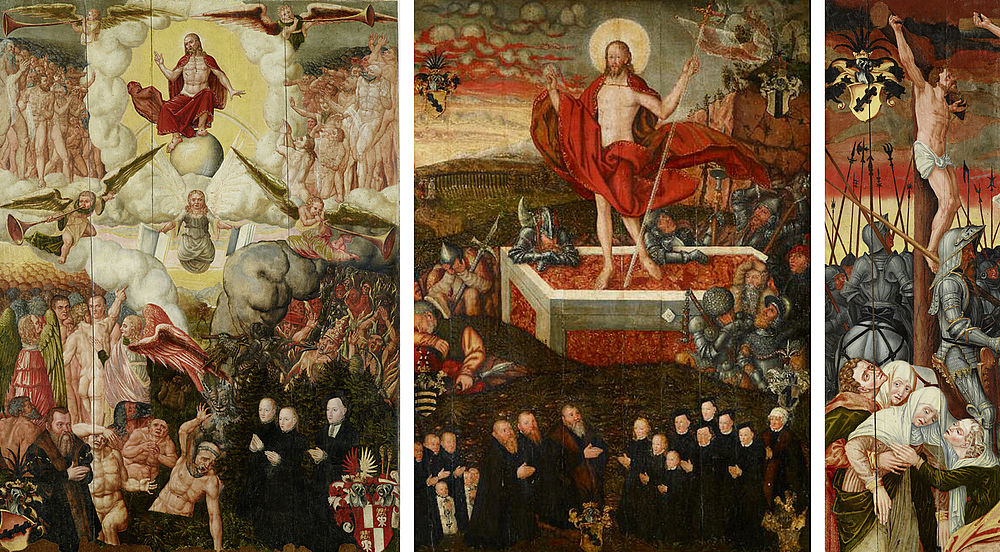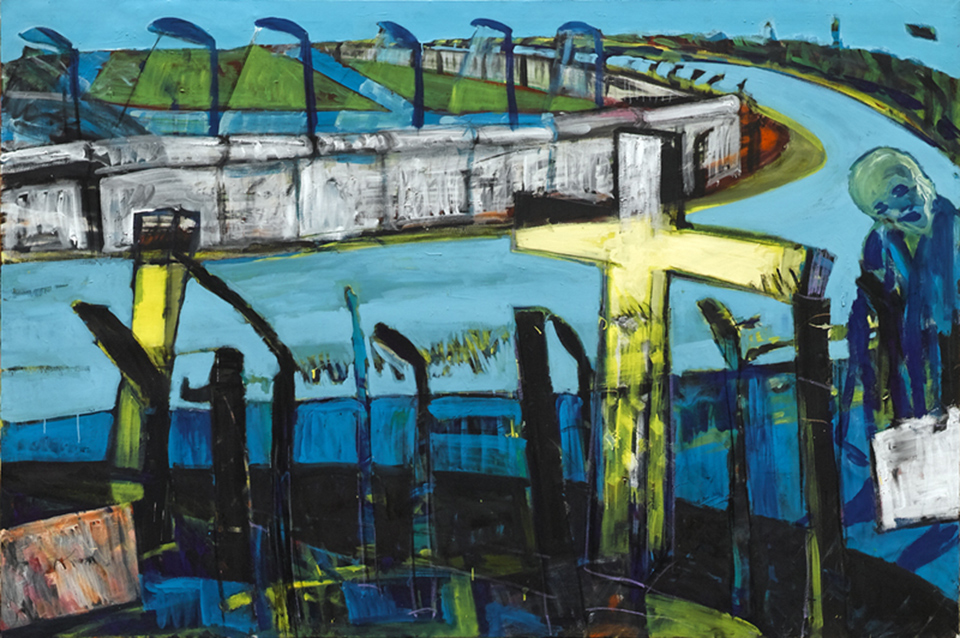Current research projects
As well as preserving its collections, a museum’s work also lies in studying them, with the aim of presenting and communicating the findings. Here, we introduce you to recently completed or ongoing research projects and their findings.
Acquisitions using funds from the Reinhold Steckner endowment, 1905–1911
Ever since the foundation of Moritzburg Art Museum, Halle an der Saale, benefactors and donors have been of great importance. Over the past 130 years and more, some 900 individuals and institutions have made donations to the museum of various types and sizes. In the coming years, a series of multiple exhibitions and publications initiated by the Friends and Sponsors of Moritzburg Art Museum, Halle an der Saale will reveal how the collections developed over the course of the museum’s history thanks to civic engagement.
Assessment and restoration of three panel paintings from Löbnitz

In 1949, the museum acquired three wooden panel paintings from Löbnitz, near Delitzsch, as a result of land reform legislation in the Soviet occupation zone. They are important works from the time of the Reformation, impressively portraying the Last Judgement as a work of Lutheran propaganda. They come from the palace of the von Schönfeldt family, who were closely connected to Luther.
One of the paintings, depicting the Resurrection of Christ and dated 1562, was restored in preparation for the 1972 Cranach exhibition. The two others, one of the Last Judgement and the other a fragmentarily preserved Crucifixion of Christ, could not be exhibited due to their poor condition. These were examined and restored, drawing upon art restoration technology, by certified restorer Tino Simon at the Academy of Fine Arts, Dresden as part of a three-year project financed by the Friends and Sponsors of Moritzburg Art Museum, Halle an der Saale, with generous support from Dr Hanna Leistner.
The historical and technological investigation enabled the panels depicting the Last Judgement to be dated to the period from 1570 to 1580 and attributed to the atelier of Lucas Cranach the Younger (1515–86) along with the Resurrection painting. Based on stylistic differences, the fragment depicting the Crucifixion of Christ was attributed to an anonymous Saxon atelier from the second third of the 16th century.
All in all, the investigations confirm the latest view among art historians of Cranach’s atelier as highly collaborative, with multiple artists always working on one picture. All the works were exhibited in 2016/17 at the exhibition Kunstsammlungen Sachsen-Anhalt. Encounters. From Cranach to Holbein.
Recording and researching into Einar Schleef's entire artistic legacy
When Einar Schleef’s artistic legacy was taken over in 2004, work also began on compiling an inventory of his works. The aim was to create a directory of his more than 7,100 paintings and works on paper and to make that inventory available to researchers. The work was started by art historian Ulrike Zwanzig, Halle an der Saale, who, with some exceptions, made records on the entire inventory in an initial database.
In preparation for its online publication, between 2017 and 2019 the inventory begun by Ulrike Zwanzig was checked work by work, items were added, the system was reorganised and the data sets were linked to reproducible images. Marko Kloß, an expert in theatre and cultural studies from Leipzig, was brought in to carry out this extensive task. He has concentrated intensively on the life and works of Einar Schleef since 2008.
The review of and corrections to the previous inventory have now been supplemented by keywords (on people, places and dates) which reflect the individual works, enriching the database with Kloß’s in-depth knowledge of the life of this universal artist. As a result, the database-supported online publication acts as an image archive which offers the first ever opportunity to comprehensively examine Einar Schleef's artistic legacy, enabling further scientific and academic research into his artistic oeuvre.
Einar Schleef’s artistic legacy Small-scale presentation “Untitled [EINAR SCHLEEF]” (from 30 May 2019)

